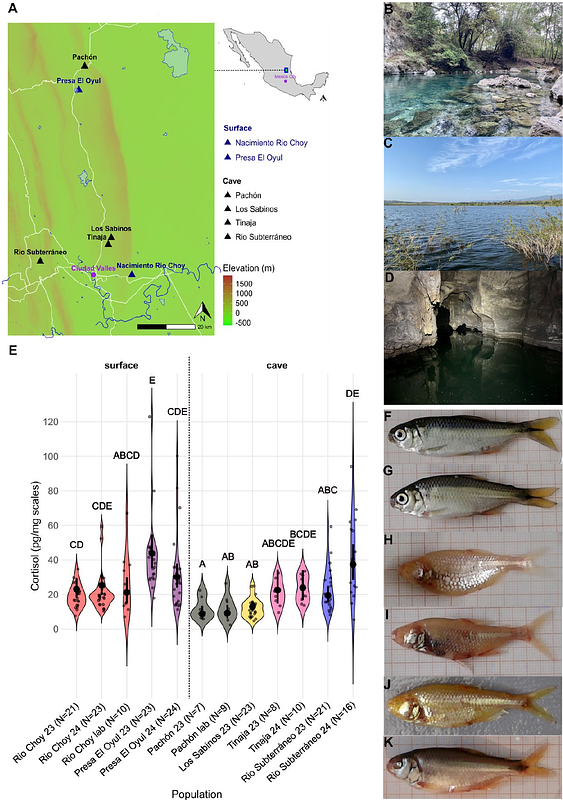Environmental dynamics influence scale cortisol levels in Mexican cavefish

Environmental dynamics influence scale cortisol levels in Mexican cavefish
Bauhus, M. B.; Wander, L. C.; Boy, D.; Santacruz, A.; Maldonado, E.; Kurtz, J.; Kaiser, S.; Peuss, R.
AbstractCortisol is a key hormone involved in stress responses, and its regulation can vary across populations experiencing different environmental pressures. While short term changes in certain environmental factors can result in immediate changes in cortisol levels, it remains unclear whether variable and fluctuating environments affect lifetime stress responses of individuals. In this study, we estimated lifetime-experienced stress in cave- and surface-dwelling populations of Astyanax mexicanus. The advantage of this model is that different populations are confronted with varied dynamics of environmental change, making it an ideal study system to investigate lifetime stress responses upon environmental fluctuations. To estimate lifetime-experienced stress, we measured cortisol levels in the scales of A. mexicanus for the first time using an ELISA assay. We studied six populations from six different habitats (four cave and two surface habitats) that vary in their dynamics of abiotic factors. We analysed scale cortisol levels across two years to examine temporal changes and individual variability within and between populations. Our results show that increased fluctuations in abiotic parameters are associated with an increased cortisol level in scales and, in addition, an increased inter-individual variability within a population irrespective of cave or surface habitat. These findings highlight the influence of varying ecological conditions on lifetime-experienced stress in A. mexicanus, providing insight into potential adaptive mechanisms underlying stress regulation in extreme environments.